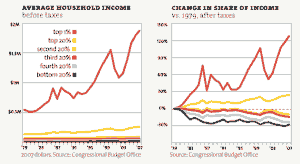
In the vast arena of political discourse, certain claims manage to gain unwarranted traction, despite being built on shaky factual foundations. One such misconception pertains to the notion of a supermajority attributed to former President Barack Obama during his tenure in office. It is of utmost importance to rectify this misperception, to unearth the reality behind the composition of the Senate during Obama’s time. Contrary to popular belief, the so-called supermajority was nothing more than a fleeting illusion, riddled with complexities that hampered the advancement of certain legislative priorities.
Diving into the Senate’s Composition
Throughout a portion of Barack Obama’s presidency, there indeed existed a brief period during which Democrats possessed a numerical advantage in the Senate. However, referring to this fleeting advantage as a “supermajority” would be misleading, as its very foundation rested upon the affiliation of two Independent Senators, namely Joe Lieberman and Bernie Sanders, who caucused with the Democrats. The curious twist in this narrative lies in the fact that Joe Lieberman, one of the Independents in question, had historically lent his support to Republican candidates, even backing John McCain, Obama’s GOP opponent in the 2008 presidential election. This revelation accentuates the delicacy of the majority, which relied on the alliance of Independent Senators rather than a unified Democratic front.
A Transient Numerical Edge
Regrettably, the purported supermajority’s existence was but a fleeting mirage, transiently gracing the landscape of Obama’s first term. As we are acutely aware, the balance of power within the Senate is ever-evolving, subject to the vicissitudes of each election cycle. Thus, the Democrats’ slim numerical advantage hinged precariously upon an intricate balancing act. The shifting dynamics of Senate representation, prompted by the arrival of new members or alterations in political allegiances, rendered this numerical edge anything but enduring. Consequently, any claims of a formidable and stable supermajority dissipate when confronted with the reality of this fleeting numerical advantage.
Lieberman’s Opposition to The Affordable Care Act
One of the cornerstone legislative achievements during Obama’s tenure was the passage of The Affordable Care Act, affectionately known as Obamacare. Nevertheless, the belief that a supermajority paved the way for its passage stands in stark contradiction to the internal dynamics of the Democratic ranks. Joe Lieberman, the Independent Senator aligned with the Democrats, was unyieldingly opposed to the inclusion of a public option within the healthcare bill. Consequently, in the interest of garnering sufficient support for its enactment, the final version of the bill was passed without the contentious public option. This momentous compromise bears testimony to the obstacles the legislation faced, far from the purported ease facilitated by a fictitious supermajority.
Unmasking the “Rotating Villain” Fallacy:
While some may argue that Joe Lieberman served as a convenient “rotating villain” at the time, perpetuating the notion that Democrats always find scapegoats to avoid passing progressive legislation, such a perspective lacks a comprehensive understanding of historical contexts and legislative dynamics. It is essential to draw comparisons to past instances when progressive legislation was successfully passed, despite facing opposition from within the Democratic ranks.
The FDR and LBJ Comparisons:
Looking back to monumental legislative accomplishments in the past, we find that President Franklin D. Roosevelt’s passage of the Social Security Act and President Lyndon B. Johnson’s enactment of Medicare both faced opposition from some Democrats within their own caucus. During FDR’s era, the Democratic caucus held 64 Senate seats, and despite having a significant majority, there were still Democrats who voted against the progressive bill. Similarly, when LBJ championed Medicare, Democrats held an even greater 68 seats in the Senate, yet some of their own voted against the landmark legislation.
The Crucial Factor of Democratic Numbers:
In contrast to the transient numerical advantage during Obama’s presidency, FDR and LBJ were bolstered by substantial Democratic majorities. The sheer number of Democrats in these instances, coupled with a handful of Republicans who were willing to support progressive legislation, contributed to the successful passage of these landmark bills. The significant difference in the size of the Democratic caucus allowed them to navigate internal disagreements and secure enough votes to push the progressive agenda forward.
Changing Political Landscape:
It is important to acknowledge that the political landscape has evolved over the years. In the past, there were instances where progressive legislation could garner bipartisan support, with some Republicans voting in favor. However, contemporary politics often witness a higher degree of party polarization, making bipartisan collaboration more challenging to achieve.
Conclusion
The idea that Democrats will invariably find a convenient scapegoat or two to avoid passing progressive legislation oversimplifies the intricate dynamics at play during crucial legislative moments. The historical comparisons to the passage of Social Security and Medicare emphasize that successful progressivism requires not just a scapegoat but a strong and unified majority with the will to forge ahead. The numbers, along with the ability to build coalitions, played a vital role in propelling landmark progressive legislation. As dedicated political bloggers, it is our responsibility to avoid oversimplifications and foster a nuanced understanding of the complexities that shape the course of legislative history.






